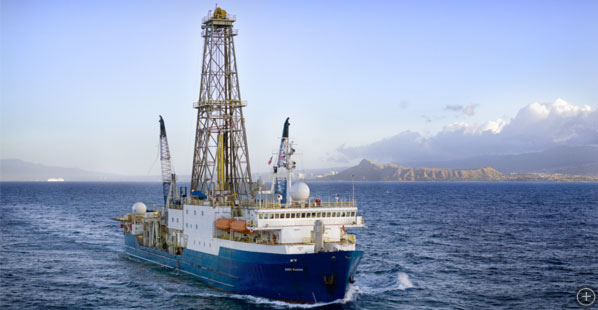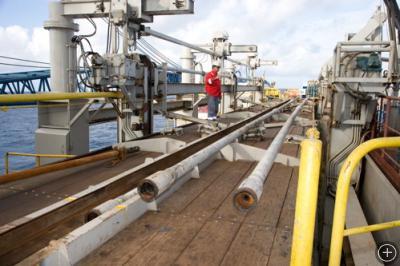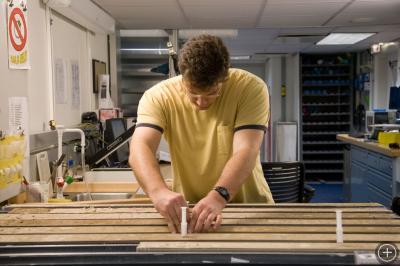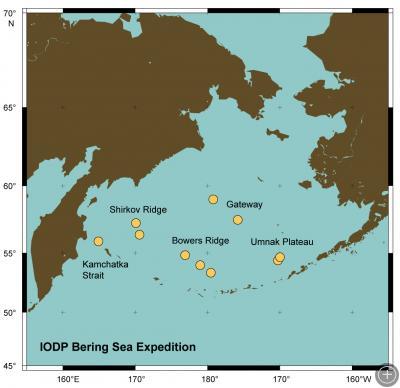
Seafloor drilling in the Bering Sea
From July to September 2009, the scientific drilling vessel JOIDES Resolution undertook a nine-week expedition in the Bering Sea. (JOIDES stands for “Joint Oceanographic Institutions for Deep Earth Sampling.”) Led by co-chief scientists Christina Ravelo and Kozo Takahashi, aboard the ship was an international team of about 35 scientists, 25 technicians, and high school science teacher Doug LaVigne, who was the Ice Stories correspondent for the project.
The team drilled more than 600 meters (2,000 feet) into the sea floor to extract sediment cores that will provide the first comprehensive records of environmental and oceanographic conditions in the Bering Sea over the past 5 million years. The scientists hope to reconstruct the history of this shallow sea, which acts as a fence between the North Pacific and the frigid waters of the Arctic Ocean.
So what can be learned from sediment cores? Fossils of microscopic shelled organisms can tell scientists a lot about ocean temperatures in the past, which can help scientists understand climate shifts.
The earth’s climate has alternated between colder glacial periods and warmer interglacial periods. From sediment cores and other evidence gathered from places around the world, scientists have a global picture of the earth’s climate history. What causes glaciation, however, is not understood. While various conditions seem likely to contribute to glaciation, it appears that there must be a number of factors interacting in complex ways.
Learning the local climate history of the Bering Sea and how it may have affected other regions, particularly the North Pacific, may help solve the mystery of why glaciers advance and retreat. And if scientists can understand the mechanisms of past climate change, they’ll be better able to predict what might happen to our climate in the future.











